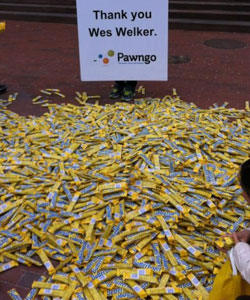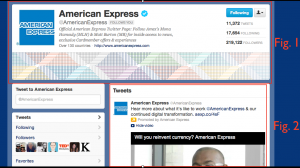
I’ve been a Posterous user and supporter for several years now, both personally and professionally (the3six5 and General Motors are two examples), but I’ve always kept a Tumblr blog on the side, just to have it. (More here on how to use Posterous.)
I made the switch to Google Chrome as my primary browser a few months ago, which resulted in some issues with the Posterous bookmarklet, the most convenient way to snag content from around the web and post it on your Posterous. So I switched my personal lifestream platform over to to Tumblr. (NOTE: You can read more on creating a lifestream flow in this white paper I wrote)
Tumblr’s always been the home of single-topic humor blogs, such as the infamous Look At This F*cking Hipster and the lesser-known Kim Jong-Il Dropping the Bass. I’ve always kept my Tumblr pretty vanilla, but last week, I decided to take a shot at creating a separate, single-topic Tumblr blog. (I won’t share its name; if you really want to know, ask me offline!)
I learned a few things along the way, the biggest of which is this: if you want to create an instant following think about starting with Tumblr. Now, this following may not necessarily be the most “influential,” (as digital marketers, we all love our influencers) but it will certainly get you noticed, and fast. In fact, the day after my Tumblr blog went live, it was mentioned and linked to in a Wired article.
Here are a few additional tidbits:
– Give your Tumblr blog a laser-focused, timely theme that people can relate to in some real way. This could be either a news-related peg (e.g. Kim Jong-Il), or something that people see every day (e.g. ironically dressed hipsters). Unless you already have a rabid community of followers on, say, Twitter, your general-themed Tumblr blog just might not get noticed. (On a side note, I think it’s interesting that several traditional news organizations have created general-themed Tumblr blogs as ways of flexing their social media muscles. I might write an Old Media, New Tricks post on this later.)
– Once it’s up and running, your Tumblr should be a mix of original, aggregated and community-submitted content.. If it’s aggregated (either a repost or a link), always cite the source. If a reader sent it in, thank them in the body of the post.
– Always post photo/video content with a caption. This is really a no-brainer, and it especially holds true if you’re syndicating your posts on Twitter and Facebook.
– If you can, find creative ways to translate your topic to other niches (“geek”-type examples include Star Trek, LOLcats) or culturally relevant subjects, objects or people. Your content will spread like wildfire. On day one, my blog started in a vacuum; by the end of the day a few of my posts got 500-plus “notes,” or re-blogs, and in addition to Wired, content from my site was featured in several topic-related roundups around the Web.
– Your following will come and go quickly. Before starting my experiment, I thought that any idiot with a Tumblr account could create a LATFH-type blog. Keeping LATFH going for as long as it was took a ton of work; its success can easily be attributed to two things: it was about a topic that everyone related to and felt passionate about. (After all, who doesn’t make fun of hipsters?) The pictures and captions were also damn funny, which kept people reading.
Overall, creating a single-topic, humor-based Tumblr blog was a fantastic creative exercise, one that definitely gave me a few laughs along the way. (On a related note, if you’d like to read about brands using Tumblr, try this.)
______________
Have you created a single-topic Tumblr blog? Please share any additional tips as comments below!






